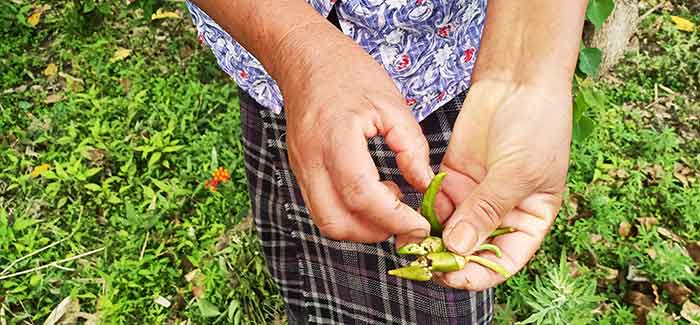Phurpa Lhamo | Punakha
Barely a week after the first chili harvest, the fields of Lakhu, Changyul and Ritsa in Punakha were flooded with pod or fruit borer pests.
It is the third year that the pests have devasted the crop.
Chili harvest season in these villages ends by late June, and farmers prepare their fields for paddy cultivation.
The farmers said that the infestation was also early.
Namgay Om, a farmer at Ritsa village, said that last year, pests invested the fields months after the farmers collected their first harvest of chilies.
“The infestation is never during this time. In the past, we would collect around three sets of chilies from the field. This time I just collected a few kgs for monasteries and my relatives,” Namgay Om said.

The farmers further said that the pests not only damaged the chilies, but it also ate the leaves cutting it off from the plant.
“The chilies, especially which had just started growing are cut off from the plants,” Namgay Om said.
According to Punakha dzongkhag agriculture officer, Gaylong, pod borers lay eggs early on the chili plants and hatch during rainy season infesting the harvest.
He said that the infestation last year wasn’t as worse as it was this year. “The damage is only in certain pockets of Punakha dzongkhag. The current chili harvest is early because these plants are planted in the wetlands of Lakhu, Changyul and Ritsa.”
Today, dzongkhag agriculture officials have provided farmers with pheromone trap (nets), which helps attract adult pod borers to avoid laying eggs.
However, many are sceptical about the trap.
Kochum, a farmer at Lakhu, said that the traps were helpful if the pests weren’t already in the fields. “Once it is in the fields, the nets aren’t helpful,” she added.
Agriculture officials have also advised the farmers to avoid using pesticides if the chilies were ready for harvest as it would be inconsumable.
“In younger chili plants we have sprayed some pesticides and have asked them not to harvest anything before 21 days,” Gaylong said.
If not for the pests, farmers in the dzongkhag make around Nu 50,000 from chilies planted in 50 decimal land. “I usually make around Nu 50,000 after all expenditure. It is doubtful this year,” Namgay Thinley, a farmer in Lakhu said.
To avoid a similar situation next year agriculture officials will distribute more pheromone traps as it has been proven the most effective.
“Next year, we are planning to distribute the pheromone traps earlier than we did this year. The chilies planted on drylands of Lingmukha and Talog are safe,” Gaylong said.
Lingmukha and Talog farmers expect to harvest in August.


